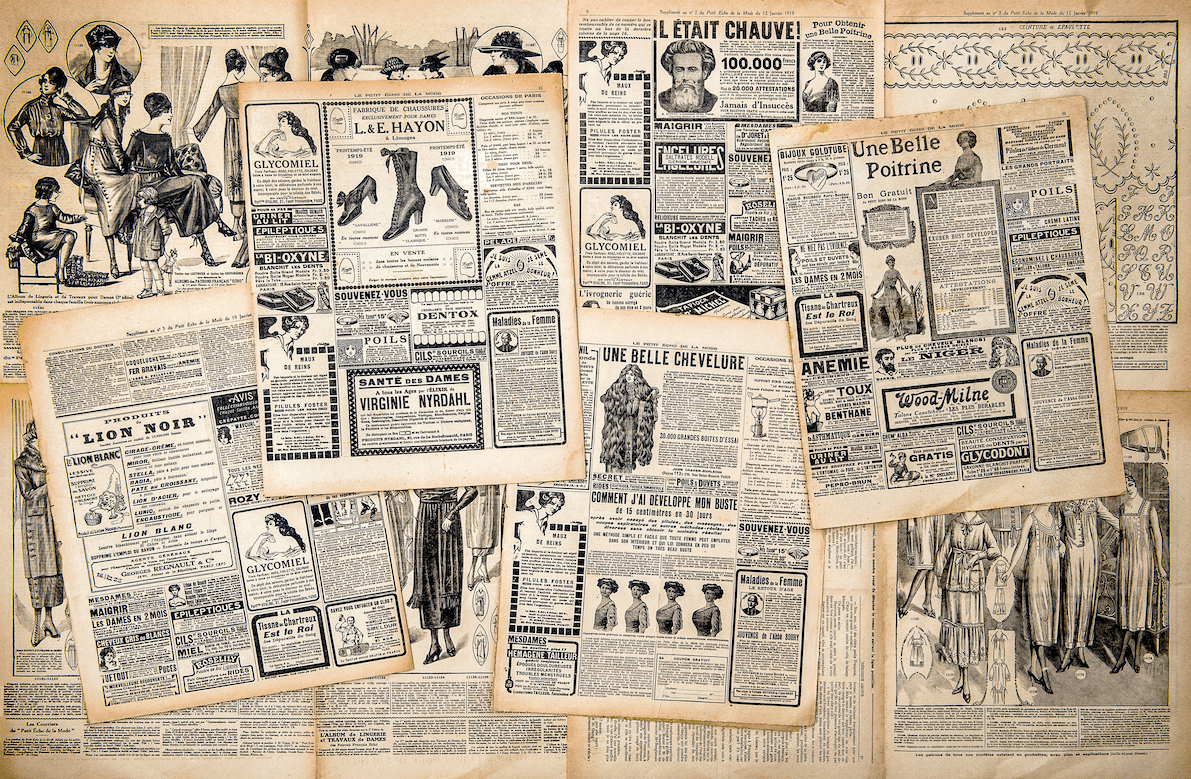The Egyptians & The Evolution of Advertising:
This evolution of advertising is quite profound and has deep roots embedded in ancient times. Advertising dates back to ancient Egyptian and Greek times in 3000 B.C at a time when most argue that literacy was not common. However, some say that cave drawings still found today were one of the forms of advertising as images and symbols helped get the message across. This is what you would find in books which convince you that most people could not read or write in those days. Those were the so called dark ages, however, people’s expertise in every profession is a proof that they were perhaps the most talented and educated people of all times.
Also, at that time people making use of their vocal cords took to the streets of Babylonia to advertise their products.
The Papyrus Sheets & Rock Paintings:
Coming back to the history of advertising, Egyptians used to carve stones with messages etched and place them alongside roads for people to notice. Looking back in time, we do get to know that rather than writing, vendors used to display symbols and illustrations of their products creating awareness about existing or new product arrivals. One of the earliest advertising messages written on papyrus sheet is about 3000 years old that shares the notice of a runaway slave in Egypt. It has been preserved in the British Museum. The Greeks mostly resorted to lost and found messages. Similarly, advertising through rock painting has its origins in India and can be traced back to 4000 BC. Later advertising took the form of handbills and the first newspaper advertisement got to be published in London’s Weekly Relations News in 1622. There goes the evolution of advertising and its foundations.
Advertising has indeed evolved through centuries, molding itself with innovation and art.
Timeline of the Evolution of Advertising:
1441:
Johannes Gutenburg was a German printer and goldsmith who introduced the first movable type with replaceable metal and wooden letters. Though it is also said that such a printing process has it’s origin from China from the eleventh century. Gutenburg has gained widespread popularity in this regard.
Mid to late 1400’s:
Printed handbills and posters gained widespread popularity.
1477:
William Caxton printed a handbill, Pyes of Salisbury’. It was one of the first printed ads.
1622:
Even though newspapers appeared in the market in early 1600’s, the first ever print ad to have been published in one was in London’s weekly Relations News. 1702 witnessed the introduction of London’s first daily newspaper, ‘London Daily Courant’ and Dr. Chamberlen’s necklace was advertised with the help of testimonials. Newspaper advertising followed in USA in 1704 (Boston Newsletter) while England was still the trend setter. Later as printing processes developed by the late 1800’s and literacy grew, paid advertising became common. The start of paid advertising was initiated by Franklin in 1741 in General Magazine.
1655:
The use of the term ‘advertising’ became common. After The Great Fire of London (1666), this term started being used by the London Gazette.
1833:
Penny press was established. It was a term used to describe the business tactic of producing newspapers that were sold for 1 cent. 1833 is when Benjamin Day founded The Sun, a New York City newspaper.
1849:
Invention of rotary press enabled economies of scale in terms of printing as opposed to flatbed press. There was then a transition towards halftone engraving in 1893.
1850’s and 1860’s:
Volney Palmer became the first advertisement sales agent and sold newspaper advertisement space in more than 1,300 of them. On the other hand, George Rowell became the first ad space wholesaler thus contributing to the evolution if advertising.
Branded products emerged in the market, such as Baker’s Chocolate.
1864:
JWT was established by J. Walter Thompson as an advertising agency.
1879:
Ivory Soap was introduced by Procter & Gamble. It comes as a surprise to some that the company emerged as a partnership of soap and candle production.
1880’s:
Quaker Oats started advertising and emphasizing on it’s functional attributes. Lord & Thomas agency was taken assistance from.
John Emory Powers founded the concept of copywriting.
1886:
Coca Cola got advertised as the ‘Ultimate Brain Tonic’ while in 1904 models were employed for promotional campaigns.
1888:
George Eastman introduced the first Kodak Camera and advertised it through catchy words such as, “Anybody can use it and push the button, we do the rest.”
1895:
Advertisements for weight gain products appeared, such as that by Lorings and Corpula Foods.
1914:
Federal Trades Commission (FTC) act was passed which focused on undermining deceptive advertising.
Early 1900’s:
Celebrity testimonials gained momentum and contributed to the evolution of advertising.
1950’s:
Other than print, television became an important advertising medium as well. ‘The Kraft Television Theater’ being the first network television program was produced by JWT.
Rosser Reeves used the unique selling proposition and hard sell approach to sell M&M’s and Eisenhower.
1960’s:
David Ogilvy used the story telling and image advertising approach especially as a result of emphasizing on luxury and status symbol. Advertisements for Hathaway Shirts and Rolls Royce are such examples. Much of the evolution if advertising is attributed to Ogilvy for that matter.
What later followed was an outcome of globalization and merger sprees that made the world a smaller place to interact with. Nike’s most renowned ‘Just Do It’ campaign started in 1988 by Wieden & Kennedy has reaped an outstanding brand image which is evident even till this day.
The Era of Digitization:
What we have today is the era of digital advertising, mass customization and, consumer centricism. Quicker and better ways of reaching the customer have resulted in capitalization and market growth. At the same time, bad publicity can sometimes be inevitable because the brand didn’t think it through while sending an advertising message across. For example, Pepsi and Nivea are examples of having gained virality a few months back for the wrong reasons. Also, earlier this year, the fashion brand H&M also faced backlash for its advertisement of a black kid wearing a hoodie with the words ‘coolest monkey in the jungle’ written across. While a white kid was shown wearing one with ‘survival expert’ written on it. This was followed by public furor online, later the brand had to apologize for this type of discriminatory advertisement.
Advertising has evolved through the decades and although and has now progressed and penetrated thanks to the era of digitization. The brand message ought to be crisp, engaging and to the point to be able to gain the target market’s attention. It is for the very reason that aAttention spans have declined and it’s now convenient for consumers to shut off advertising when not needed.





